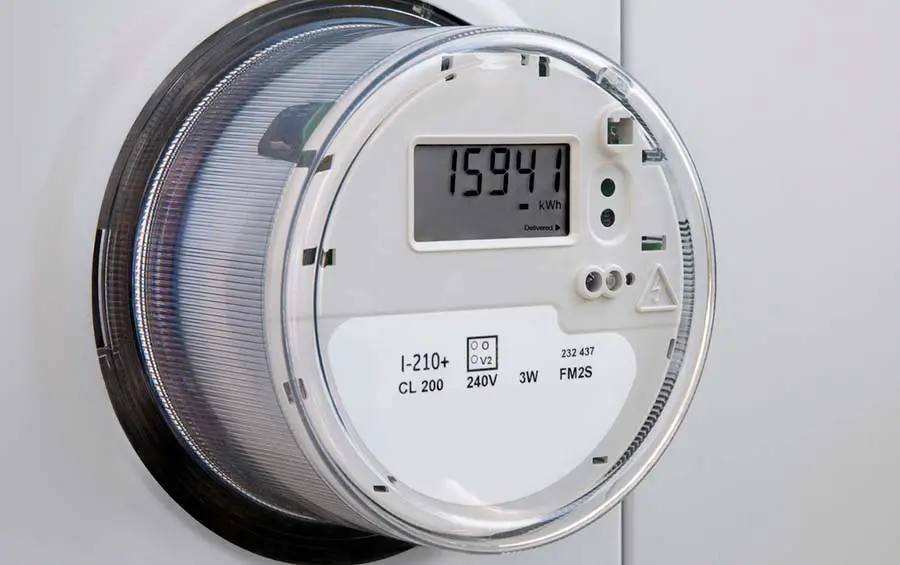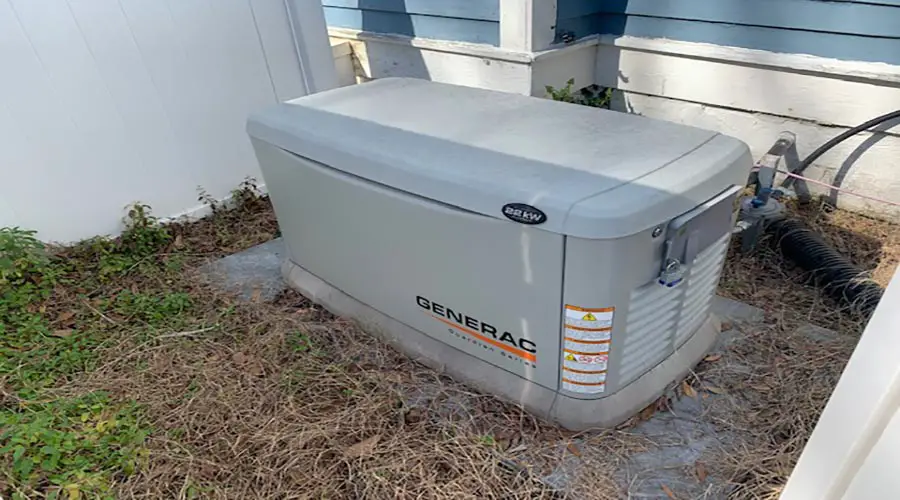
If you are looking to buy a generator because you wish to power your house, you will probably have to do some research to determine how large the generator’s capacity has to be. It requires some calculation to determine the number of watts a generator must supply to power a house, but you may wonder how many watts on average it takes to power a home.
In 2015, reports said that, on average, an American household consumed 10,800 kilowatt-hours of power per year. That translates to 1,233 watts that are required to power a house each instant. With closer inspection, we see that instantaneous watt requirements can exceed 10 kW to power a household.
To establish the number of watts required to power your home, you must consider a couple of factors. In addition, there are different watt requirements when calculating the watts needed to power your home. To demonstrate these principles, we will take a look at a couple of examples below.
How Many Watts Does It Take To Run a House?
Before you determine the watts you require to run your house, you must first ascertain several things. This is because the amount of wattage you will need to run your home can vary too much and depends on various factors, namely:
- The size of your house.
- The number of people living in your house (and how many of them use your electrical appliances).
- How many electrical appliances you have in your house, and of what nature they are (low-intensity electrical consumption vs. high-intensity electrical consumption).
- How frequently the electrical appliances are used.
- Whether or not you have any facilities at your house that are prone to consume a lot of electricity, such as air conditioners.
- The general climate where you are located (since colder places may have higher rates of heating devices that consume a lot of electricity).
Accordingly, when we want to determine how much energy a household consumes, we must first ascertain where the household falls in terms of these factors.
The Average Watts Used In American Households

Let us start with the basics. It is reported that the average consumption of energy in a household in the United States was approximately 10,800 kilowatt-hours in the year 2015. If we divide this yearly energy consumption rate by 12, we get 901 kilowatt-hours that were consumed, on average, every month by each American household.
Now we have an average to work with. Based on this estimate, we can take the average yearly energy consumption and divide it by 365 to find the daily consumption, which is approximately 29.59 kilowatt-hours. Now that we have the daily energy consumption, we can determine the corresponding watts.
If we take 29.59 kilowatt-hours and multiply it by 1,000, we get 29,590 watthours – this is the energy consumption of watts that occur in 24 hours. Accordingly, if we divide this value by 24, we can determine the watts of power the household requires. 29,590 divided by 24 gives us 1232.9 watts of power.
We have now established how much watt is required to power the average American household in 2015. We can round this number to say that the number of watts needed to power your average home in the United States is 1,233.
Again, it is essential to note that this is merely an average – more specifically, as average as average gets. The number of watts you require depends on the appliances you are using at any given point in time and their watt requirements. Accordingly, the value above will probably fluctuate depending on when and what appliances you have turned on and operating.
Examples and Scenarios of Watts Required To Run a Household

We now have a rough idea of how much wattage is required to power the average home in the United States, but it would be helpful to discuss some scenarios that allow us to explore the energy requirements to power a house that is more tailored to your needs.
To calculate the watts that your household needs to function correctly, you have to distinguish between the types of watts associated with electrical appliances.
You can divide the watts an item uses into two categories:
- You have running watts, which are the watts required to continuously power your devices.
- You have starting watts, which are the watts required to power your device initially after it was turned off or when they operate at their peak levels of consuming power.
Now, to determine how many watts you will require and, thus, how big your generator would have to be to power your house, we are going to do two things:
- First, we must add the total running watts for the items you wish to use simultaneously.
- Thereafter, we must look at all the items you wish to use simultaneously and find the one with the highest starting watts requirement. We then take the item with the highest startup watts requirement and add it to the total calculated in the previous step.
Now that we know exactly how to determine the wattage requirements of your home, we can give a couple of examples.
Example 1
Let us say you have the following appliances that you wish to run simultaneously with the following specifications:
| Appliance or Device | Running Watts | Starting Watts |
| Television | 500 | 0 |
| Refrigerator | 700 | 2,200 |
| AC | 1,200 | 1,800 |
| Frying Pan | 600 | 0 |
This is a basic scenario, but here is how to calculate how many watts your generator needs to supply to your home:
- The sum of the running watts is (500 + 700 + 1200 + 600 =) 3,000 watts.
- The item with the highest starting watts is the refrigerator, with starting watts of 2,200.
Now, we merely sum these two values, and it equals (3,000 + 2,200 =) 5,200 watts. Accordingly, we can say that the total starting watts that your generator is required to supply, in this scenario, is 5,200 watts, and the running watts your generator has to supply is 3,000 watts.
Example 2
A more realistic example would be to list all the appliances that you would most likely use during the day, and choosing any reasonable combination of items on the list, and do the same calculation:
| Appliance or Device | Running Watts | Starting Watts |
| Water heater | 4,000 | 0 |
| Space heater | 1,800 | 0 |
| Toaster | 1250 | 0 |
| Coffee maker | 800 | 0 |
| Washing machine | 750 | 2,300 |
| Refrigerator | 700 | 2,200 |
| TV (27”) | 500 | 0 |
| Desktop PC | 300 | 0 |
| Cell phone charger | 10 | 0 |
| Microwave (750W) | 750 | 800 |
There are too many other items that can go on this list that it would be sufficient to use this list to demonstrate the principle at hand.
Let us assume that your water heater, space heater, desktop PC, and refrigerator are continuously operating. We base this assumption on the premise that you are in a colder environment in the United States, you do not need to turn off your desktop PC.
- Based on these assumptions alone, we can say that your running watts requirement is (4,000 + 1,800 + 300 + 700 =) 6,800.
- Your starting watts requirement is (6,600 + 2,300 =) 8,800 watts. Thus, at the very least, you will require a generator that can produce 8800 starting watts.
The running watts that you consume will vary depending on the other items on the list above. You will use your cell phone charger and coffee maker once a day, you will use the microwave some days, and sometimes you will also use the toaster.
If we do not assume that you will power them simultaneously, your instantaneous wattage requirements can still increase by 2,000 watts at any given point in time. This can boost your use of power up to 10,800 watts.
To reconcile this with the watts required to power your average American household in 2015, we can clearly state a significant fluctuation between households and how they consume energy.
To balance out 1,233 watts with 10,800 watts, that means that people often turn off their large appliances that consume a lot of energy, and those with vast amounts of appliances are in the minority in the United States.
It also makes sense because the average watt usage in the US is based on the actual usage of appliances. In contrast, the 10,800 watts shown above are based on instantaneous usage of appliances simultaneously.
Conclusion
In conclusion, it can take anything between 2,000-3,000 watts to power your home if you have the basics, such as a refrigerator and a water heater. On the other side of the spectrum, you can have multiple ACs in your home and various appliances that you use simultaneously that bump your watt usage beyond 10 kW.
To error on the side of caution, it is better to purchase a generator with a capacity that exceeds 10 kW to not put too much strain on it.

